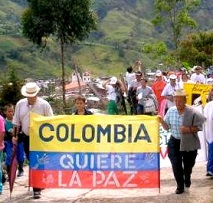
Vermont Activists Battle Democratic Governor for Single-Payer Health Care
Source: In These Times
Liz Nikazmerad is a rarity in American labor: a local union president under the age of 30, displaying both youth and militancy. For the last two year years, she has led the 180-member Local 203 of the United Electrical Workers (UE), while working in the produce department of City Market in Burlington, Vermont. Thanks to their contract bargaining, full-time and part-time employees of this bustling community-owned food cooperative currently enjoy good medical benefits.
But that wasn’t always the case in Nikazmerad’s past non-union jobs, nor is it any assurance that UE members won’t be forced to pay more for their health care in the future. To curb medical cost inflation and related cost-shifting to workers, the UE has long advocated that private insurance plans be replaced with publicly funded universal coverage.




